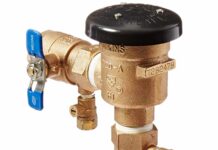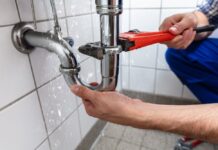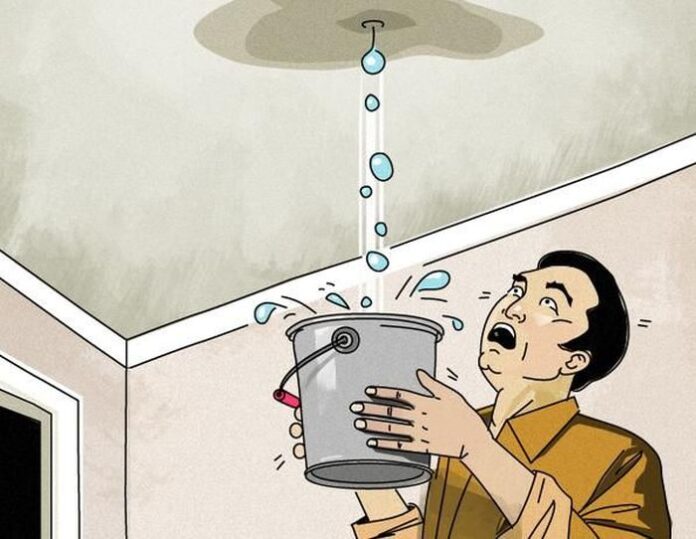
It doesn’t matter what floor you live on, if you live in an apartment block you need to know how the drainage system works. The short answer to the question of whether water from an upper apartment can enter a lower one is yes.
It’s not a pleasant experience.
The good news is that it’s not a common experience.
Apartment Plumbing
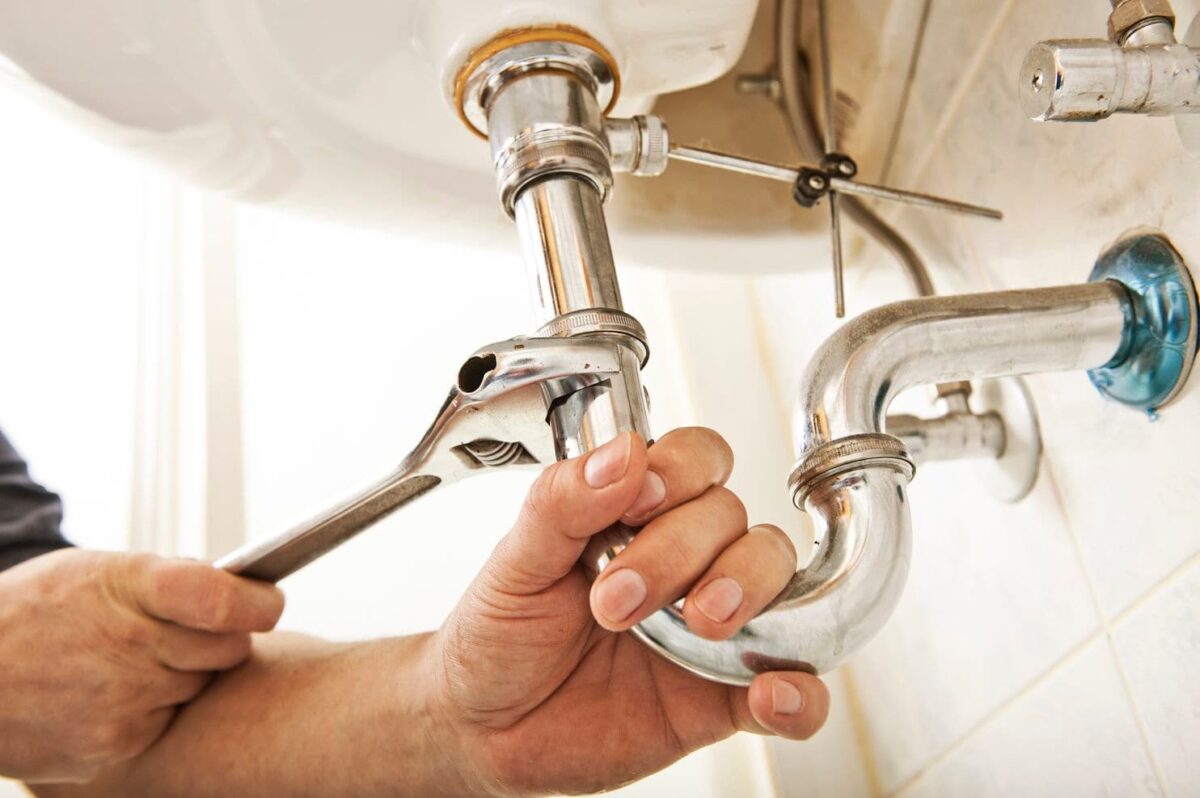
Every apartment has it’s own plumbing. That the piece that goes from your appliance or sinks to the main drain pipe. The main drain pipe goes down the building and connects to the mains drainage under the ground. From here it is transported into the sewage system, where it is treated before being released into the water cycle.
In a large apartment block, there are likely to be several mains drainpipes, each one will connect a set number of apartments to the mains drains.
It’s worth noting that every appliance has a U bend in its plumbing, this traps water and prevents drain gas and odors from entering your apartment.
How A Blockage Occurs
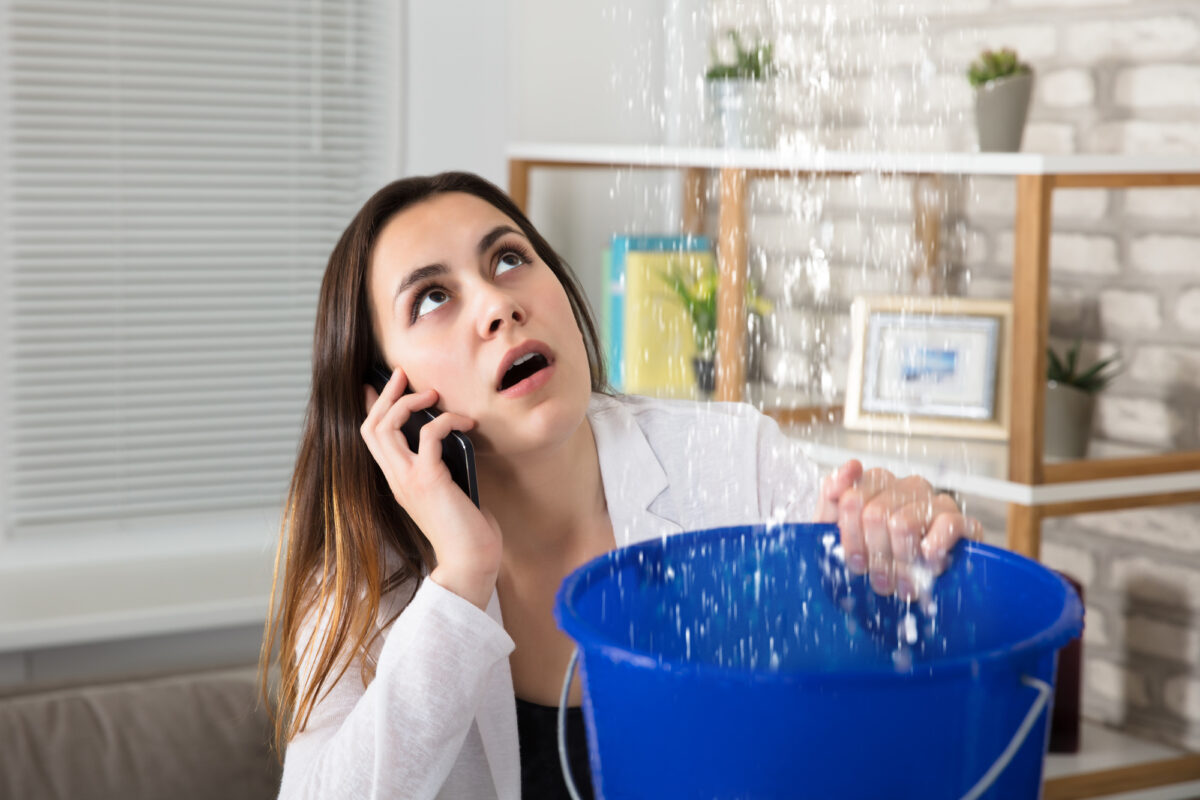
In a normal situation, all wastewater from the apartment moves smoothly down the pipes and away from the apartment. There is no issue.
However, if a clog appears in the drain the water can’t get past. When this happens the water builds up, backing up through the pipes until it is high enough to come out of a drain.
Unfortunately, it will come out of the lowest drains first. This is the moment you start to panic. The fluid coming out of the drains will be sewage from all the apartments using the same vertical stack as you. It can even be for all the apartments. That means every time something goes down a drain in the apartment block the level of wastewater in your lower floor apartment is going to rise.
You’re going to need to act fast and that starts with stopping the other apartment dwellers putting anything down their drains.
How A Clog Occurs
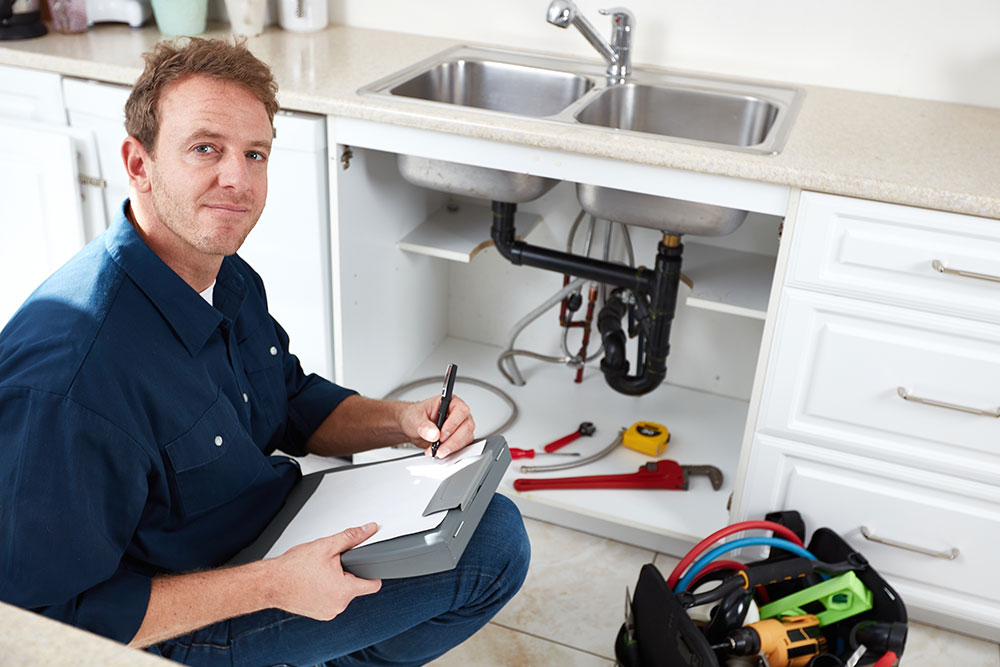
Clogs can appear for a variety of reasons. The good news is that in most cases clogs occur in the U bend. That means the individual apartment with the clog is affected and not you. It’s only when a clog appears in the main drain that you’ll need to worry about it backing up to where you are.
Clogs are generally big chunks of toilet paper, wet wipes, sanitary products, and other items, such as toys, that shouldn’t be put down the drains. Even hair and food waste ca bund together to cause a clog.
In general, a clog appears gradually. You’ll first notice that your sinks are draining slower than normal. This is a sign that a partial clog has appeared. If left unattended it will become a complete clog. Partial clogs are more likely to appear in apartment plumbing rather than the main drains because the pipes are narrower.
Preventing clogs is as simple as being aware of what goes down your drains and making sure it is only things that are supposed to. That means no wet wipes, sanitary products, or toys!
The problem with living in an apartment block is that you can’t control what others are putting down the drains, making a blockage more likely as there will always be at least one person who either doesn’t understand the issue or doesn’t care.
Another reason that blockages can occur is damage to the pipe. This can happen if someone has been digging near your pipes and damaged them or left them unstable. But, damage can also happen if roots grow into the drains. They are likely to crack the drainpipe and eventually block the pipe or cause it to collapse completely.
Old drains can also fall into disrepair and simply crack, allowing soil in. Over time this will block the pipe and start the process of backing up sewage.
Dealing With A Blockage

It can be distressing seeing sewage bubbling up in your drains, threatening to come into your home. The best advice is to call the professionals to resolve the issue properly.
However, you can invest in a drain camera from austeck.com and take a look for yourself. The camera slides through the drains, feeding a picture back to you. This gives you the opportunity to inspect the inside of the drains and locate any blockage.
You’ll then be able to insert the drain rods, drain snake, or take the drainage apart to remove the blockage and get the water flowing properly again.
If the blockage is due to tree roots and the main pipe is damaged you’ll find it challenging to repair. A digger will almost certainly be necessary and you’ll need to tell all residents not to use the drain temporarily. The best approach in this instance is to use a pipe liner. This can be slid inside the pipe and connect the two pieces each side of the damaged section. It’s generally inflated to create a snug fit and epoxy is used to hold it in place. The best thing about this approach s there is no need to get into the pipes or dig up the ground.
If you have a lower floor apartment you may also wish to consider adding one-way valves to your drainage system. This will allow wastewater out of your home but won’t let anything back in.
Final Thoughts
The best way to prevent blockages is to think about what is going down your drains. But, as this is difficult to enforce with several people in different apartments, you may find it advantageous to use your drain camera regularly and get the professionals to check out the drainage system at least once a year.
In fact, every apartment block should do this as part of the maintenance that all inhabitants pay. It can identify issues before they happen and save everyone a lot of heartaches.
After all, as they say, prevention is always better than cure.

